Night photography with a drone is one of the exciting activities every drone lover wants to perform, but can drones fly at night? What are the requirements for night drone flying, and how can they affect your drone performance? These questions must be answered before flying your best drone at night.
Can Drones Fly at Night?

Yes, you can fly a drone at night if you follow the legal requirements and take the necessary precautions. However, there are some restrictions and regulations in place to ensure safety.
Recreational drone pilots
Recreational drone pilots in the US can fly their drones at night without having to apply for a waiver by following these rules.
- Your drone must be equipped with anti-collision lighting that is visible for at least three statute miles.
- It is essential to keep the drone within sight of the pilot.
- You cannot fly a drone above 400 feet above ground level at night.
- You cannot fly the drone within five miles of an airport.
Part 107 drone pilots (Commercial drone pilots)
Part 107 drone pilots can also fly their drones at night, but they must complete an additional training course, and their drones must be equipped with anti-collision lighting that is visible for at least three statute miles.
Remember, it is important to be aware of your surroundings and avoid flying in areas with a lot of light pollution, as this can make it difficult to see the drone. It is also important to be familiar with your drone’s features and ensure that it is equipped with the necessary safety features.
What are drone night flying requirements?
The drone night flying requirements are different for Recreational and commercial drone pilots.
Recreational drone pilots
Anti-collision lighting
Your drone must be equipped with anti-collision lighting that is visible for at least three statute miles. This lighting must be mounted on the drone and have a sufficient flash rate to avoid a collision.
Visual line of sight (VLOS)
It is essential to maintain the VLOS of your drone at all times. You must be able to see the drone with your own eyes, without binoculars or other devices.
Altitude
You cannot fly your drone above 400 feet above ground level (AGL).
Distance from airports
You can only fly your drone within five miles of an airport with prior authorization from the airport control tower.
Commercial drone pilots
Anti-collision lighting
Ensure your drone has anti-collision lighting that is visible for at least 3 statute miles.
Training
You must complete an additional training course before flying at night. This course will cover night vision, risk management, and emergency procedures.
How high can a drone fly at night?
Drones can fly up to 400 feet above ground level (AGL) at night, regardless of whether the pilot is recreational or commercial. This is the same altitude limit that applies to daytime drone flights.
It is important to note that this altitude limit is not absolute. There may be areas where drones cannot fly above a certain altitude, such as near airports or military bases.
Does a drone need lighting to fly in the dark?
Yes, a drone needs lighting to fly in the dark. Drones are difficult to see at night, especially for other aircraft. Anti-collision lighting helps to make drones more visible and to reduce the risk of collisions.
The Federal Aviation Administration (FAA) needs all drones flown at night to be equipped with anti-collision lighting. This lighting must be visible for at least three statute miles and have a sufficient flash rate to avoid a collision.
There are different anti-collision lighting systems available for drones. Some of these systems are mounted on the drone’s top, while others are mounted on the bottom or all sides.
Choosing a lighting system that is compatible with your drone and meets the FAA’s requirements is important.
What are the Requirements for Anti-collision Lights?
When choosing anti-collision lights for your drone, it is important to consider these factors.
- The lights must be bright enough to be visible for at least three statute miles.
- The lights must have a sufficient flash rate to avoid a collision.
- The lights should be lightweight enough not to impact your drone’s flight performance significantly.
- The lights should be durable enough to withstand the elements and the rigors of flight.
- Remember, anti-collision lights are not a substitute for maintaining VLOS with your drone. Pilots should always be able to see their drones with their own eyes, even when using anti-collision lights.
Can you fly a dji drone at night?

Yes, you can fly a DJI drone at night. Many DJI drones have features that specifically make them ideal for night flying, such as bright anti-collision lights, low-light, and thermal cameras.
How to Fly a drone at night?
If you are planning to fly a drone at night safely, make sure to follow these steps.
- The first and most important thing is to check the weather conditions. Don’t fly in heavy rain, fog, or other conditions that could impair your visibility.
- Always choose a well-lit area to fly in. It helps you to see your drone and to avoid obstacles.
- Be aware of your surroundings, such as airplanes, helicopters, and ground-based obstacles.
- Make sure to fly slowly and carefully. It gives you more time to react to any unexpected events.
- Make sure to have a proper plan for landing the drone safely in case of a problem. Find a well-lit area to land or use the drone’s emergency landing features.
Jose E. Johnson is a true tech prodigy whose lifelong passion for technology and gadgets has blossomed into remarkable drone expertise. From the moment he laid eyes on his first electronic toy as a child, Jose was captivated by the limitless possibilities of innovation. As he grew, so did his fascination with cutting-edge tech, leading him to become a bona fide drone expert. With an insatiable thirst for knowledge, Jose delved deep into the intricacies of drone technology, amassing a wealth of technical knowledge and hands-on experience. Now, he shares his wisdom through insightful drone reviews and invaluable tips for fellow enthusiasts, making him a trusted source in the drone community.

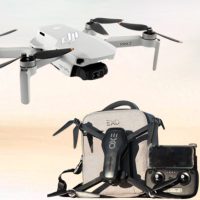
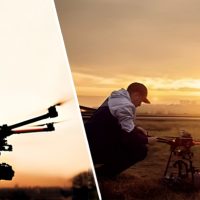
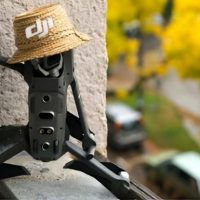
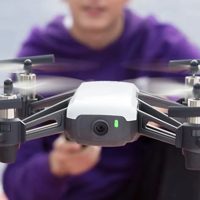
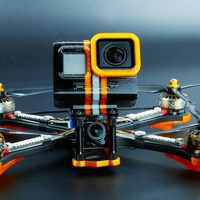
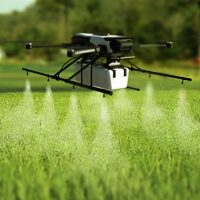
Leave a Reply